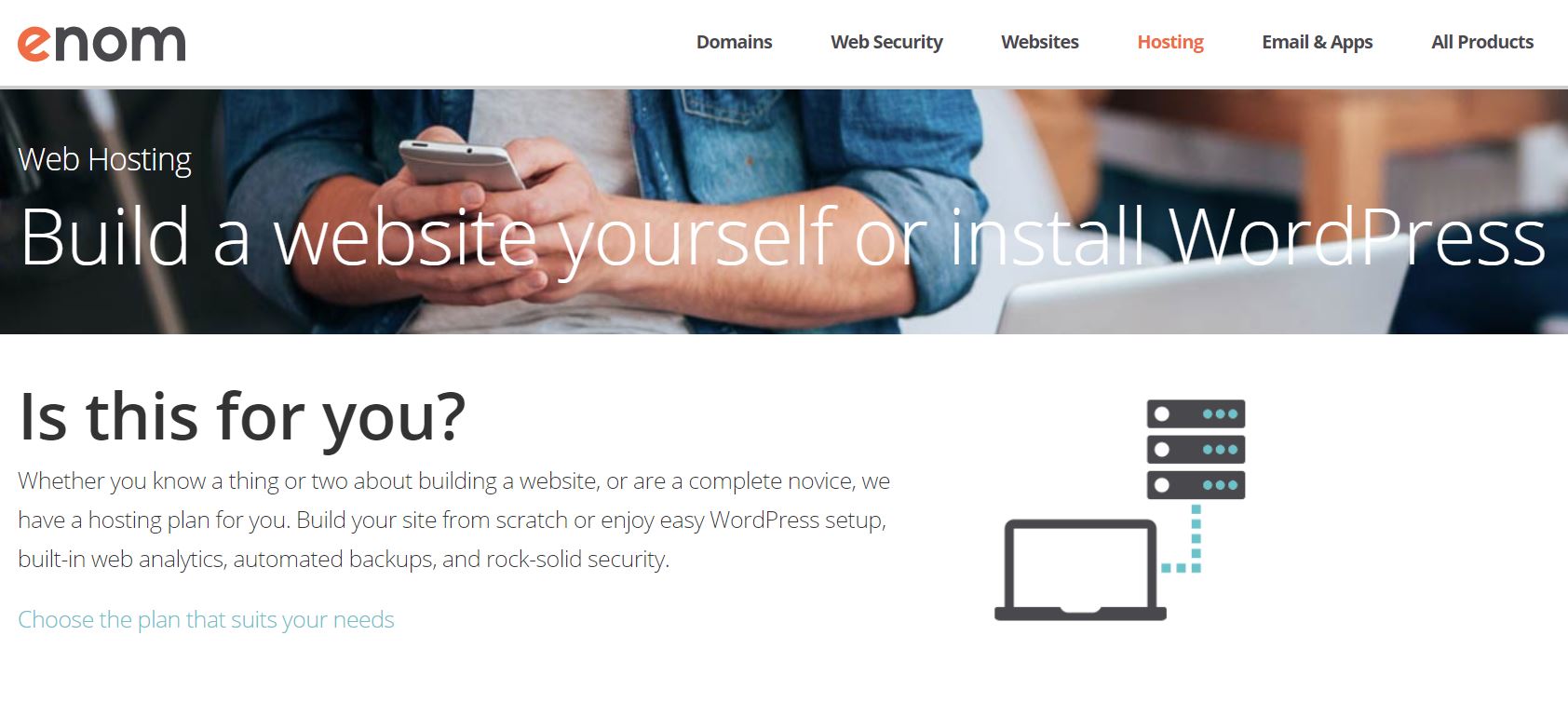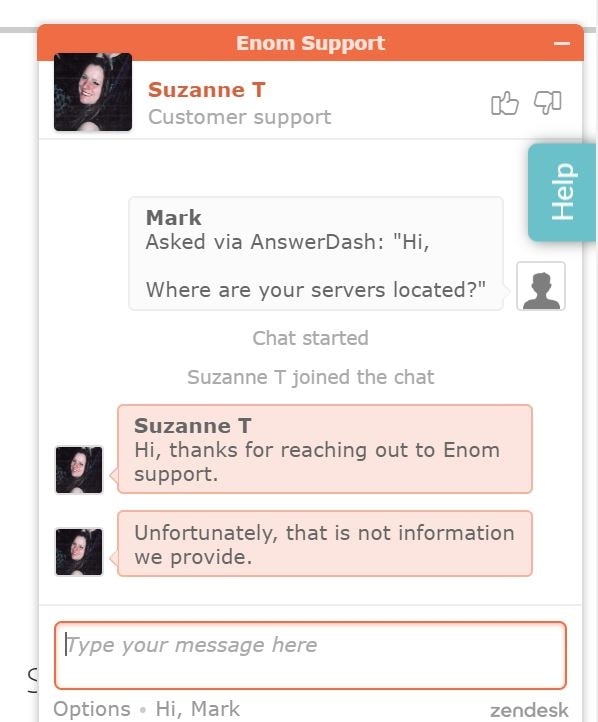
Enom is not a new player on the hosting pitch. It’s been providing web hosting and domain name registration services since 1997, and it was acquired by leading domain name services company Tucows in 2007. The company has headquarters in Bellevue, Washington, and it separately sells email and other services such as cloud storage, SSL certificates, and a website builder.
Enom’s well-presented website is available in English only.
Features and Ease of Use
Enom’s narrow range of hosting packages is limited to Linux shared hosting and DNS hosting. Nevertheless, you can expect plenty of top-quality features, including:
- 99.9% uptime guarantee
- Plesk control panel
- WordPress toolkit
- Automatic backups
- DNS management
- One-click WordPress installation
The standout feature for me is the WordPress toolkit that comes with more than 45,000 plugins to give you plenty of scope for customization.
Enom offers three shared hosting packages to suit a range of users from beginners and bloggers to professional web designers and large businesses. All plans include web analytics, automated backups, and the intuitive Plesk control panel (although I personally prefer cPanel).
There are a couple of things that I don’t like about Enom. Firstly, Enom’s website provides little or no information about its data center or server locations, and I couldn’t get any additional details from the customer support team. Secondly, I’m not fond of the fact that you have to pay extra for a website builder and SSL certificates.
Pricing and Support
Enom offers shared hosting plans that vary in terms of web space, bandwidth, and the number of domain names and email accounts they provide.
The Starter plan is a wise choice for beginners with small websites since it has 20 GB disk space and 200 GB bandwidth. The Advanced plan is better if you want to host several websites within a single account. Both plans provide support for 50 domains. Professional web designers and big businesses should go for the Business plan that provides 100 GB storage and 1000 GB bandwidth.
You can only pay for plans using a credit card, but on the plus side, you get a 14-day free trial to test the services.
For self-support, Enom has a decent enough knowledge base with video tutorials to boot, and for one-to-one support, you can call the company or submit a support ticket. This is where the good news ends because I’m otherwise unimpressed with Enom’s customer support. Although there is a dedicated 24/7 live chat channel, it took me almost an hour to get the information I needed due to the agent’s lack of knowledge:










